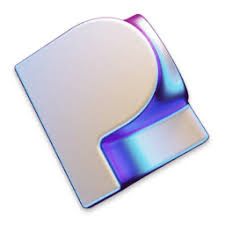3D surface modeling turns visual data into measurable form. From topographic scans to aerial imagery, it builds the digital layer that defines how we map, design, and simulate the world around us. Today’s tools automate what once required endless manual edits – detecting slopes, contours, and elevation changes within minutes.
Modern platforms combine AI-driven geometry extraction with user-guided refinement, delivering models that stay both accurate and lightweight. Whether used for construction planning, mining surveys, or landscape reconstruction, 3D surface modeling tools bring terrain and structure into focus – fast, consistent, and ready for analysis.

1. FlyPix AI
At FlyPix AI, we focus on automating how spatial and visual data is interpreted. Our platform uses artificial intelligence to detect, classify, and measure objects in satellite, aerial, and drone imagery. This process supports 3D surface modeling by converting visual scenes into structured, measurable data layers. The system identifies terrain details, contours, and surface features, helping teams create digital models faster and with less manual editing.
We approach geospatial analysis as an adaptable process rather than a fixed toolset. Using our GeoAI platform, users can train models, refine outputs, and integrate multi-source data from drones, satellites, and LiDAR. For projects that depend on surface modeling, this means more reliable digital terrain and structure representations built directly from imagery. FlyPix AI combines visual data with automated object recognition to support construction planning, mining, environmental mapping, and similar spatial applications.
Key Highlights:
- AI-driven automation for object detection and terrain segmentation in geospatial imagery.
- Integration with satellite, drone, and LiDAR data for 3D surface reconstruction.
- Custom model training for domain-specific geospatial tasks.
- No-code interface that allows model setup and annotation without programming knowledge.
- Data sourcing and quality validation for consistent spatial resolution.
Services:
- GeoAI platform for automated geospatial analysis.
- Custom project pipelines for object detection and change monitoring.
- AI model training for specific use cases in mapping and terrain analysis.
- Data acquisition and integration from multiple imagery providers.
- Cloud-based processing for scalable 3D surface modeling workflows.
Contact information:
- Website: flypix.ai
- Email: info@flypix.ai
- LinkedIn: www.linkedin.com/company/flypix-ai
- Address: Robert-Bosch-Str. 7, 64293 Darmstadt, Germany
- Phone: +49 6151 2776497

2. Onshape
Onshape provides a cloud-based environment for parametric and surface modeling, used widely in mechanical and industrial design. The company’s approach to 3D surface modeling tools focuses on precision, control, and workflow flexibility. Through its integrated surfacing system, Onshape allows designers to create complex, freeform geometries without separating surface and solid operations. This method supports a continuous process where surfaces can be shaped, adjusted, and connected to solids as part of a unified model. The result is a workflow that helps in constructing and refining 3D surfaces for engineering and visualization.
In 3D surface modeling, Onshape emphasizes the practical balance between accuracy and simplicity. The platform provides a structured toolset grouped into categories such as wireframe creation, surface generation, manipulation, and diagnostics. This organization gives users the ability to build, test, and correct surfaces directly inside their models. The company has also introduced features like control point editing, curvature diagnostics, and custom extensions to support complex surface creation. By combining traditional CAD functions with modern, cloud-native collaboration, Onshape strengthens design work that depends on detailed surface geometry and parametric adjustment.
Key Highlights:
- Unified modeling environment that integrates surface and solid design.
- Parametric control for adjusting curves and surfaces across entire models.
- Surfacing tools divided into wireframe, surface, manipulation, and diagnostic categories.
- Options to create, modify, and analyze surfaces directly within the same workflow.
- Cloud-based platform that supports collaborative surface modeling projects.
Services:
- 3D surface and solid modeling through an integrated CAD platform.
- Wireframe and curve-based modeling for defining surface boundaries.
- Surface manipulation and refinement tools for freeform geometry.
- Diagnostic features for checking curvature, continuity, and tangency.
- Cloud collaboration and version control for design teams working on 3D surface models.
Contact information:
- Website: www.onshape.com
- E-mail: privacy@onshape.com
- Facebook: www.facebook.com/onshapeInc
- Twitter: x.com/Onshape
- LinkedIn: www.linkedin.com/company/onshape
- Instagram: www.instagram.com/onshapeptc
- Address: 121 Seaport Boulevard, Boston, MA 02210
- Play Market: play.google.com/store/apps/details?id=com.onshape.app&hl=ru
- App Store: apps.apple.com/ua/app/onshape-3d-cad/id923421284?l=ru

3. Phi3D
Phi3D develops a browser-based platform for creating freeform 3D surface models with both artistic flexibility and engineering accuracy. The software focuses on curve-based modeling, allowing designers to sketch natural shapes that are automatically converted into smooth, watertight surfaces. This approach helps users handle organic forms without complex technical steps, making the process faster and more intuitive. The connection to 3D surface modeling tools is direct — Phi3D translates hand-drawn design intent into precise surface geometry that can be integrated into CAD workflows.
Phi3D integrates seamlessly with Onshape, enabling live updates between models and part studios. Users can import and edit Onshape designs or reference sketches while maintaining a consistent design structure. The cloud setup means that the platform runs directly in a web browser, removing installation barriers and allowing teams to collaborate from any location. By bridging artistic design with engineering precision, Phi3D supports industries that depend on complex surface modeling, from consumer products to mechanical design.
Key Highlights:
- Curve-based 3D surface modeling for natural shape creation.
- Direct interoperability with Onshape for model import, editing, and live updates.
- Cloud-native platform accessible through any modern web browser.
- Produces watertight, high-quality surfaces suitable for manufacturing.
- Combines intuitive freeform modeling with engineering-grade precision.
Services:
- Web-based 3D surface modeling platform.
- Curve drawing and surface generation tools.
- Integration with Onshape for seamless workflow continuity.
- Import and export capabilities for STL and STEP formats.
- Collaborative modeling environment with real-time updates.
Contact information:
- Website: phi3d.com
- Facebook: www.facebook.com/phi3d.modeler
- LinkedIn: www.linkedin.com/company/phi-3d
- Instagram: www.instagram.com/phi.3d
- Address: 6 Apollonos str., 10557, Athens, Greece
- Phone: +302103240390

4. Dassault Systèmes
Dassault Systèmes develops CAD and 3D modeling solutions that support both solid and surface modeling workflows. Within its ecosystem, surface modeling tools are used to build freeform shapes and detailed surfaces that extend beyond standard solid geometry. The company’s software applies mathematical modeling techniques, such as NURBS and subdivision modeling, to construct complex curves, textures, and contours. These features are widely applied in industrial design, automotive engineering, aerospace, architecture, and product visualization, where high-precision surface structures are required.
The surface modeling tools from Dassault Systèmes are integrated across platforms like CATIA, SOLIDWORKS, and the 3DEXPERIENCE environment. These platforms allow designers to create detailed external geometries, analyze curvature, and manage hybrid workflows that combine surface and solid modeling. The connection to 3D surface modeling tools lies in the ability to translate conceptual shapes into manufacturable designs, maintaining flexibility for freeform creativity while ensuring engineering-level precision. The company’s systems support browser-based collaboration, simulation, and data exchange, offering a consistent modeling environment for teams working in multiple industries.
Key Highlights:
- Integration of surface and solid modeling tools within a unified CAD ecosystem.
- Advanced modeling methods, including NURBS, subdivision, and hybrid techniques.
- Support for visual, mechanical, and organic surface creation.
- Cloud-based 3DEXPERIENCE platform for real-time collaboration and data management.
- Applicable to industries such as automotive, aerospace, architecture, and healthcare.
Services:
- Surface and hybrid modeling solutions through CATIA and SOLIDWORKS.
- 3DEXPERIENCE platform for connected design and simulation workflows.
- Tools for NURBS, polygonal, and parametric surface modeling.
- Visualization and rendering features for realistic surface evaluation.
- Collaborative CAD environment for industrial and engineering teams.
Contact information:
- Website: www.3ds.com
- Facebook: www.facebook.com/DassaultSystemes
- Twitter: x.com/dassault3DS
- LinkedIn: www.linkedin.com/company/dassaultsystemes

5. Plasticity
Plasticity offers a direct modeling environment focused on solid and surface modeling for design, visualization, and industrial use. The platform emphasizes a creative workflow where surfaces and solids are built, adjusted, and refined without rigid parametric constraints. This approach supports 3D surface modeling tasks that rely on freeform shaping while maintaining precision through live dimensioning and Boolean operations. Plasticity connects artistic design methods with engineering-grade geometry, enabling the construction of watertight, continuous surfaces suitable for both conceptual and production-level work.
The software operates across Windows, macOS, and Linux and integrates surface modeling features such as xNURBS blending, curve bridging, and curvature-based fillets. Plasticity is positioned as a practical tool for users who need control over surface smoothness and continuity without the overhead of history-based workflows. Its focus on real-time editing, accuracy, and cross-format compatibility makes it adaptable to fields where 3D surface modeling tools are essential, such as vehicle design, industrial modeling, and visual production.
Key Highlights:
- Combines solid and surface modeling with direct editing.
- xNURBS surface blending for smooth and continuous transitions.
- Supports live dimensioning and curvature-perfect fillets.
- Boolean operations for clean, watertight geometry creation.
- Runs natively on Windows, macOS, and Linux without subscription requirements.
Services:
- Direct and surface modeling environment for 3D design.
- Tools for filleting, bridging, and surface refinement.
- Import and export of common 3D file formats including STEP, IGES, and STL.
- Integration features for Blender and Rhino workflows.
- Perpetual licensing for individual or enterprise users.
Contact information:
- Website: www.plasticity.xyz
- E-mail: contact@plasticity.xyz
- Twitter: x.com/getplasticity

6. SOLIDWORKS
SOLIDWORKS provides 3D Sculptor, a browser-based modeling solution designed for creating organic and freeform shapes. The tool centers on subdivision (Sub-D) surface modeling, allowing designers to push, pull, and sculpt 3D forms interactively. It runs entirely in the cloud, which removes the need for traditional installation or high-end hardware, making it accessible across devices. The connection to 3D surface modeling tools is clear — 3D Sculptor enables flexible surface creation that combines artistic design freedom with CAD-level geometry.
The software integrates the xShape app, which converts Sub-D models into NURBS geometry suitable for downstream use in CAD systems like SOLIDWORKS and other 3DEXPERIENCE applications. This interoperability ensures that surface models created in 3D Sculptor can move directly into detailed engineering workflows. It also includes built-in version control and collaboration features, allowing design teams to adjust shapes, review changes, and share feedback in real time. SOLIDWORKS uses this platform to streamline how surface modeling supports concept development, industrial design, and digital sculpting.
Key Highlights:
- Cloud-based Sub-D modeling for organic and freeform shapes.
- Integration with the xShape app for Sub-D to NURBS conversion.
- Push-and-pull interaction for intuitive surface control.
- Seamless connection with SOLIDWORKS and other 3DEXPERIENCE tools.
- Real-time collaboration and built-in data management.
Services:
- 3D Sculptor for browser-based surface and shape modeling.
- Conversion of Sub-D surfaces to precise CAD geometry.
- Cloud data storage, version control, and live collaboration.
- Integration with xDesign, 3D Creator, and other CAD tools.
- Accessible modeling environment for designers and engineers.
Contact information:
- Website: www.solidworks.com
- Facebook: www.facebook.com/solidworks
- Twitter: x.com/solidworks
- LinkedIn: www.linkedin.com/showcase/solidworks
- Address: 175 Wyman Street, Waltham, MA 02451
- Phone: 1-800-693-9000

7. Bricsys
Bricsys integrates 3D surface modeling into its BricsCAD Mechanical environment, allowing users to work with both solid and surface geometry in a unified workspace. The software supports creating and editing surfaces from closed or open 2D profiles using standard tools such as extrude, revolve, loft, and sweep. BricsCAD’s surface modeling tools are closely tied to mechanical design workflows, giving users the ability to define, convert, and adjust surfaces while maintaining geometric accuracy. The connection to 3D surface modeling tools lies in its ability to handle complex geometries, manage surface continuity, and transition between solids and surfaces without breaking the design intent.
BricsCAD also enables direct manipulation of surface properties, including isolines, watertightness, and geometric parameters, through its properties panel. Surfaces can be extracted from solids, stitched together from regions, or generated from partial profiles. This flexibility allows designers to model precise components or larger assemblies while keeping visualization and measurement options accessible. For teams using BricsCAD in mechanical or hybrid modeling contexts, surface modeling functions as a bridge between conceptual shaping and technical detailing.
Key Highlights:
- Integrated surface and solid modeling tools within BricsCAD Mechanical.
- Commands for extrusion, revolution, lofting, and sweeping to generate surfaces.
- Ability to extract, explode, or stitch regions into full surface models.
- Editable surface properties such as isolines, watertight status, and geometry.
- Unified workspace combining design creation and modification tools.
Services:
- Surface and solid modeling within BricsCAD Mechanical.
- Conversion between 3D solids and surface entities.
- Surface property control through the Properties panel.
- Visualization and measurement tools for 3D geometry.
- Support for hybrid workflows across product design and mechanical engineering.
Contact information:
- Website: www.bricsys.com
- Facebook: www.facebook.com/bricsys
- Twitter: x.com/bricsys
- LinkedIn: www.linkedin.com/company/bricsys
- Instagram: www.instagram.com/bricsys
- Address: Bellevue 5/201, 9050 Ghent, Belgium
- Phone: +32 9 244 01 90

8. Golden Software
Golden Software develops Surfer, a geospatial modeling platform used for 2D and 3D visualization. The tool converts complex surface data into structured digital models, supporting workflows in geology, hydrology, environmental science, and engineering. Through interpolation, gridding, and visualization features, Surfer helps users create accurate 3D surface representations, a key capability among 3D surface modeling tools. It enables the construction of topographic surfaces, subsurface volumes, and cross sections that make spatial data easier to interpret and communicate.
Surfer’s strength lies in its analytical flexibility. Users can transform raw datasets using multiple interpolation methods, apply mathematical operations to grid files, and visualize spatial relationships through contour maps, shaded surfaces, or volumetric isosurfaces. The platform supports integration with LiDAR, drillhole, and raster data, allowing a seamless combination of field measurements and modeled geometry. With options for 3D flythroughs, visual slicing, and data blending, Surfer aligns well with projects requiring layered surface modeling and spatial interpretation.
Key Highlights:
- Supports over a dozen interpolation methods including Kriging and Triangulation.
- Converts geospatial data into gridded 2D and 3D surface models.
- Integrates LiDAR, drillhole, and aerial data into unified models.
- Offers volumetric visualization and subsurface analysis tools.
- Exports models to formats such as DXF, GeoTIFF, and 3D PDF.
Services:
- Surface modeling and geospatial visualization using Surfer.
- Interpolation and grid creation from irregular datasets.
- Analysis of subsurface data through profiles, volumes, and isosurfaces.
- Map creation with contouring, slope, and aspect calculation.
- Data export and sharing for CAD, GIS, and presentation platforms.
Contact information:
- Website: www.goldensoftware.com
- E-mail: sales@goldensoftware.com
- Facebook: www.facebook.com/GoldenSoftware1
- Instagram: www.instagram.com/golden_software
- Phone: +1 303 279 1021

9. QUICKSURFACE
QUICKSURFACE provides a 3D reverse engineering environment that bridges scanning and CAD modeling. The software converts mesh or point cloud data into editable CAD geometry through both parametric and freeform surface modeling tools. Its workflow begins with importing scanned data in formats such as STL or OBJ, followed by reconstructing accurate surfaces and solids that can be exported into major CAD or CAM platforms. The system is often used where 3D surface modeling tools are required to turn physical parts into manufacturable digital models.
The platform supports hybrid modeling, allowing a combination of freeform and precise parametric surfaces within the same project. This flexibility enables users to model complex shapes that balance creative form with dimensional accuracy. QUICKSURFACE includes functions for trimming, Boolean operations, filleting, and real-time deviation analysis, all focused on achieving clean, watertight geometry. The software complements existing CAD workflows by handling scanned meshes that standard modeling tools often struggle with, making it suitable for industries involved in reverse engineering, prototyping, and tool restoration.
Key Highlights:
- Converts 3D scanned mesh or point cloud data into editable CAD models.
- Hybrid modeling combining freeform and parametric surfaces.
- Real-time deviation control for precision validation.
- Tools for filleting, trimming, lofting, and sweeping surfaces.
- Compatible with industry formats such as STEP and IGES for export.
Services:
- Reverse engineering from 3D scan data.
- Freeform and parametric surface reconstruction.
- Mesh editing, alignment, and optimization.
- CAD data export for manufacturing or simulation workflows.
- Integration with major CAD platforms including SOLIDWORKS.
Contact information:
- Website: www.quicksurface.com
- E-mail: contact@quicksurface.com
- Facebook: www.facebook.com/quicksurface
- Twitter: x.com/quicksurface
- LinkedIn: www.linkedin.com/company/quicksurface
- Instagram: www.instagram.com/quicksurface3d
- Phone: + (44) 7938799083
Conclusion
3D surface modeling sits quietly behind many of the systems that shape how we build, map, and understand space. It connects field data, imagery, and design intent into one continuous layer that can be measured, adjusted, and trusted. The technology has moved far beyond manual tracing or static meshes – today, it’s about automation, clarity, and speed.
Each tool brings its own approach, but the goal remains the same: to describe reality with enough precision that decisions can be made confidently. Whether it’s processing topography from drones, refining construction terrain, or simulating a digital landscape for planning, these platforms turn visual complexity into structure. In the end, 3D surface modeling is less about the software itself and more about how it helps us see what’s already there – just sharper, cleaner, and ready to work with.
